Resources
Looking for tips and helpful information? We’ve got you covered.
Knowledge and Advice

What Type Of Fuel Should You Fill Your Car Up With?
When you pull up at a petrol station, you’ll notice the different types of fuel available at the bowser. It can be confusing to know which is the right fuel for your car’s engine. Let us take you through the fuel types you’re likely to see when you fill up.
What is octane fuel rating?
An octane rating is used to measure the stability of a fuel. This means the fuel’s capacity to avoid combusting too early when it’s compressed inside the engine. The higher the octane rating, the better the ability of a fuel to avoid pre-igniting or ‘knocking’ around the engine when you’re driving. It’s important to check your owner’s manual so you know which type of petrol to fill your car up with. A handy tip is you can also check the filler cap to find this information.
Always use the recommended petrol and not one with a lower octane rating, for example, using 91 in an engine designed for 98 could result in damage. As a general rule, you can put a higher-octane fuel in your car than the manufacturer’s requirement, but not the other way around.
Standard Unleaded Petrol (ULP)
This petrol has an octane rating of 91 and is considered as ‘regular’ unleaded rather than being classed as ‘premium.’ Most petrol cars in Australia will take regular ULP and as such, it’s the most common type of petrol. ULP is currently being phased out in some Australian states and being replaced by E10.
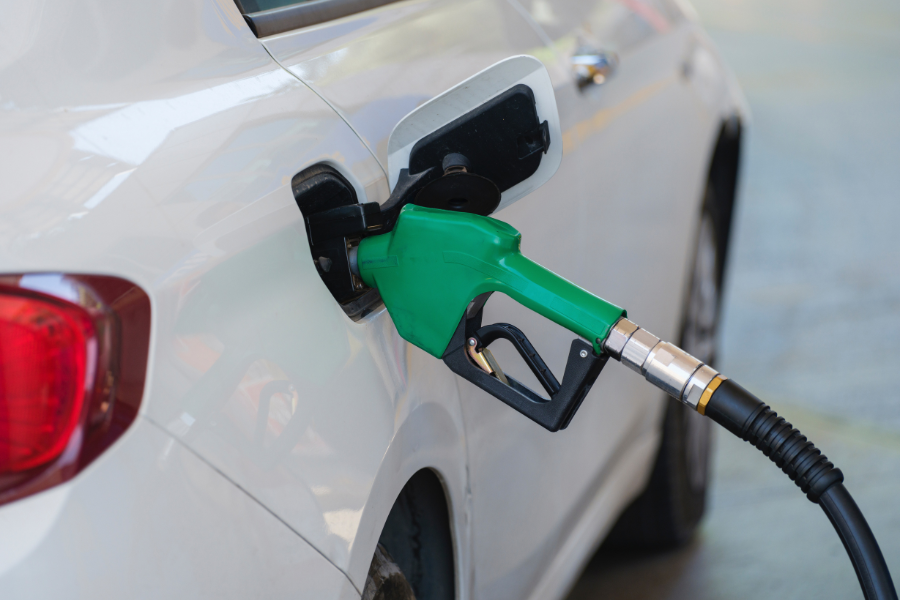
E10
E10 is a mixture of 90% unleaded petrol and 10% ethanol. Most modern cars will run E10, while some older cars may not have E10-proof materials inside their fuel systems. If you’re ever unsure, always check your owner’s manual.
The benefit of E10 over ULP is that it burns cleaner and therefore leads to lower emissions. However, E10 has a lower energy content than ULP, which means that your fuel economy will decrease when using E10 and you’ll find yourself filling up more often.
Premium 95-Octane Unleaded Petrol (PULP 95)
PULP 95 is usually the entry level fuel for some European cars like BMW and Mercedes. If your car has a ‘Premium Unleaded Only’ message on the filler cap, then you should be using PULP. Using anything less like E10 or ULP will damage the engine – resulting in some expensive mechanical repair work.
Premium 98-Octane Unleaded Petrol (PULP 98)
If you drive a supercharged car, then 98-Octane is the fuel for you. It’s the most expensive on the market because it uses more energy to keep high-powered engines running.
It’s important to keep in mind that filling your engine with a premium fuel (95 or 98) won’t necessarily improve your engine’s performance or fuel economy unless the engine is specifically designed to run on those fuels.
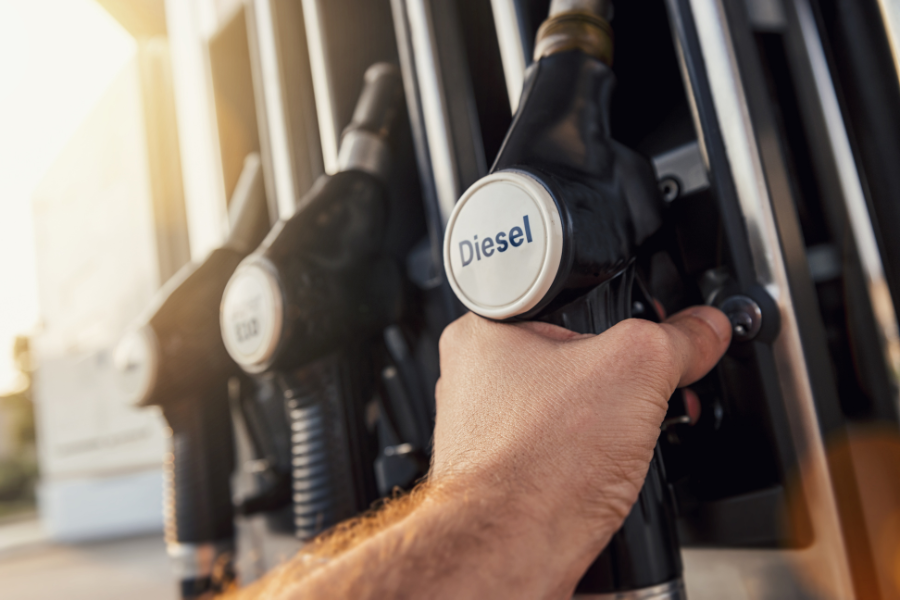
Diesel
Diesel fuel is denser than petrol and is designed to be used only in diesel engines. This means that, generally, diesel provides a higher fuel efficiency than petrol, but it also emits more greenhouse gases than petrol does.
If you would like to know more about the best option for your vehicle, speak to one of our expert mechanics during your next service.
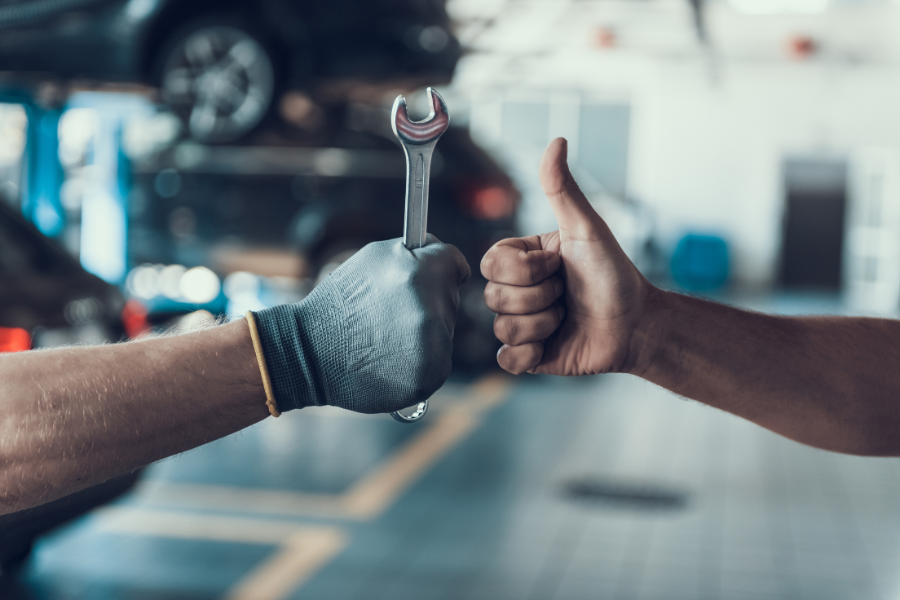
What You Need To Know About Regular Car Services
You may be wondering if you really need to take your car in for regular services, or if they’re just another thing taking up space on your to-do list.
What routine maintenance is required for a car?
Your car needs to be checked by a professional to identify any potential issues that may pose a risk to you and other drivers on the road. Something to keep in mind is that consumable items such as engine oil, oil filters, radiator coolant, brake pads, brake fluid, air filters and windscreen wiper blades need to be checked and replaced on a regular basis. Your tyres should also be looked at and rotated so that they wear as evenly as possible. In addition to this, your car may require mechanical maintenance to run smoothly. Ignoring these simple steps increases your risk of getting into an accident, especially if you’re driving on poorly maintained roads or during wet weather. By taking your car for routine maintenance, you can make sure that you and your passengers are travelling safely.
If your to-do list is already jam-packed, we can set up automatic reminders for your scheduled servicing at TAMMS Repair Centres, so it’s one fewer thing you need to worry about remembering.
How often should maintenance be done on a car?
You may be wondering how regularly you need to take your car in for a service. This varies depending on how old your car is, how much mileage it already has, and how far you drive it every day. If you’re driving an older car and commuting far to work and back home, you’ll need more regular car services than somebody with a newer car who is driving a shorter distance each day. Keep in mind that regular scheduled servicing is crucial to keep your car running for years to come.
If you’re planning on going on an extended road trip, make sure you have your vehicle booked in for a maintenance check before you go! Having car issues on your trip will not only ruin your holiday but could also leave you stranded in a remote or inaccessible location. Plus, there’s the added cost of towing and repairs.

Is it necessary to service my car every year?
Yes! Most car manufacturers recommend taking your car in for a professional service every 6 months or 10,000km, whichever comes first. Again, this may differ depending on the age of your car and how much you’re using it. A huge benefit of regular car maintenance is that when your car runs well, it’s less likely to guzzle fuel. If you’re not having your oil changed on a regular basis, your engine will become dirty and will have to work harder every time you drive. What this means is that you’ll be using more fuel, which can be expensive over time. But with regular car maintenance, you’ll achieve better fuel economy, and your vehicle will run a lot more smoothly.
What happens if I don’t service my car?
A car service is an opportunity to have your car checked and make sure that you can resolve any minor issues your vehicle may have before they cause major problems for you or other drivers on the road. In the long run, having regular car services can save you money since a small repair may mean not having to replace an entire part. For example, not rotating your tyres regularly will lead to you needing a new set much sooner than expected.
For more tips on car maintenance and servicing, make sure you take a look here.
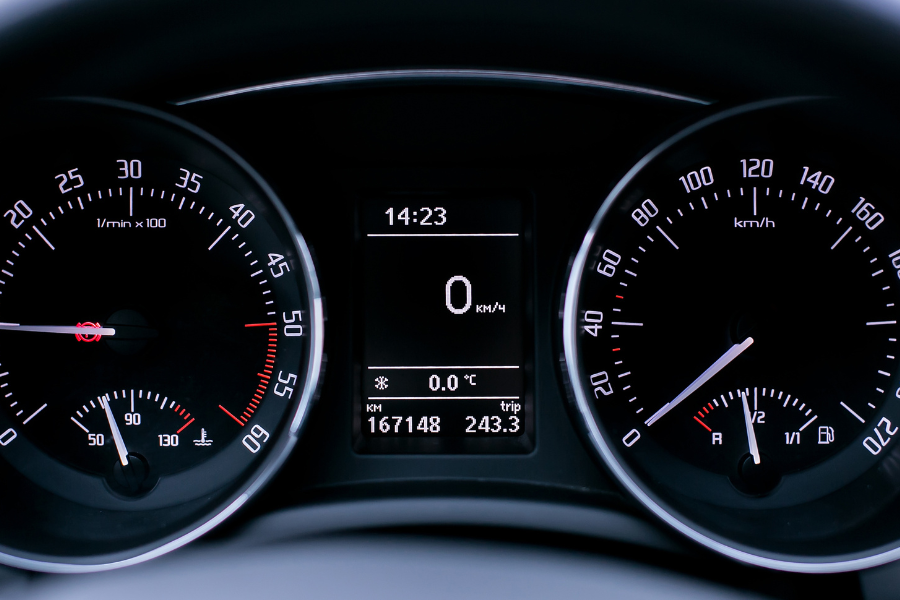
How can maintaining my car help save me money in the long run?
There are a host of benefits to maintaining your car and having it serviced regularly. And, the best news is, all of these will save you time and money in the long run by:
- Improving the safety of your vehicle.
- Extending the lifespan of your vehicle.
- Preventing any road trip disasters.
- Improving your vehicle’s fuel economy.
- Avoiding major problems and the need for major repairs in the longer term.
Our team of experts at TAMMS Repair Centres knows exactly what is required by the major dealerships to maintain your servicing and warranty, but at non-dealership prices. We can complete your logbook requirements without voiding your warranty. Be sure to get in touch with us and book your car in for a service!
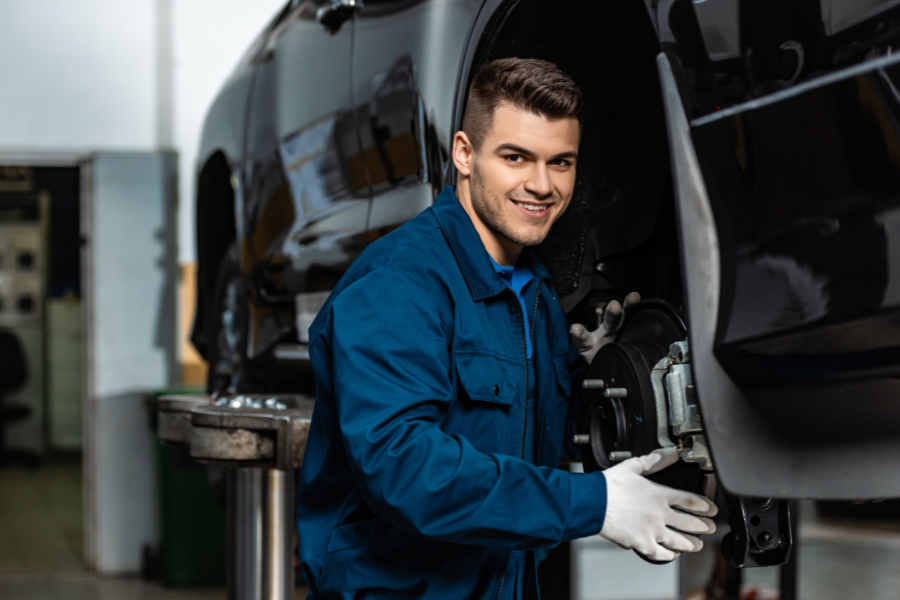
Is Tyre Rotation Really Necessary?
Many people wonder if they need to have their tyres rotated, how often they need to do it and why it’s an important part of maintaining their vehicle. The short answer is you should have your car’s tyres rotated at regular intervals if you want to extend their lifespan and ensure that you are safe when you’re out on the road. Keep reading to find out more about tyre rotation.
What is tyre rotation?
Tyre rotation means that the position of the tyres around your vehicle is changed. When the tyres are swapped around on your vehicle, they can achieve even wear. Remember that each tyre carries a different amount of weight, which means they wear at different rates. For example, if you frequently carry a heavy load at the back of your car, your back tyres will undergo more wear than your front tyres. Rotating your tyres preserves the balanced handling and traction of your tyres.
Can I rotate my own tyres?
The engine and transmission layout of your car determines the pattern to follow for tyre rotation. A four-wheel drive will have a different pattern when compared to a front-wheel or back-wheel drive, for example. Although you can learn to rotate your own tyres, it will be more convenient and give you more peace of mind if you bring your car in to a TAMMS Repair Centre and let one of our professionals do it for you.
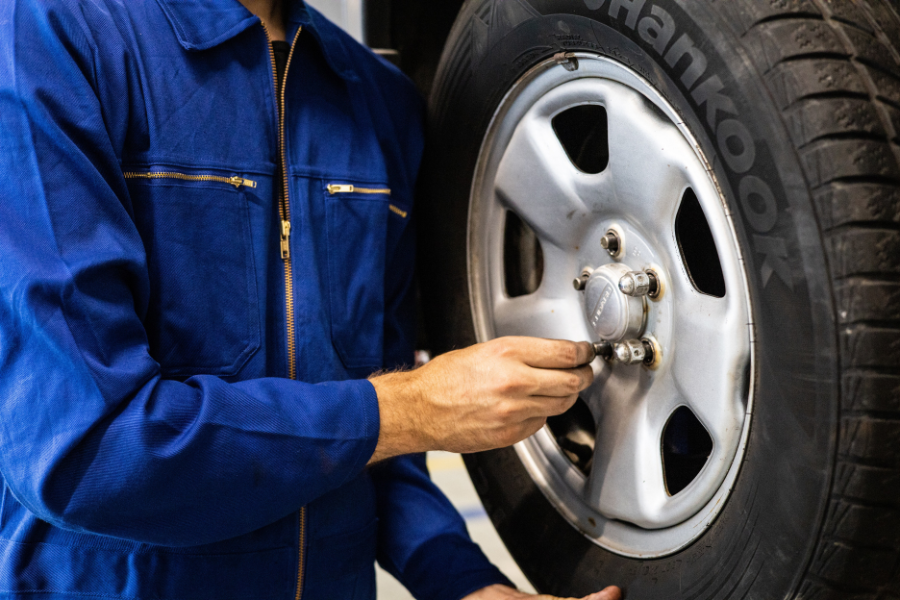
How often should I rotate my tyres?
Your tyres should be rotated regularly, generally every 10,000 kilometres or each time you take your car in for its routine service. But keep in mind that every vehicle is different, and you should check your owner’s manual for more information on how frequently you need to be rotating your tyres.
Your tyres can wear unevenly or become misaligned if you drive on unsealed roads or off-road, experience road damage, or suffer a hard impact while driving. All these factors will affect the amount of time between your tyre rotations. If you notice an uneven tread pattern on your tyres, you should arrange to take your vehicle in for a tyre rotation, even if it’s before the 10,000-kilometre mark.
At TAMMS Repair Centres, our experts can rotate your tyres as well as fit, balance and align new ones in our state-of-the-art facilities.
What happens if I don’t rotate my tyres?
By choosing not to have your tyres rotated, you’re shortening their lifespan. Not only this, but the uneven tread could lead to performance and reliability issues in the long run. It’s not uncommon to see steering issues with cars that haven’t had their tyres rotated and balanced.
Not rotating your tyres could also be dangerous for you and other drivers on the road. There’s a higher risk of tyre failure, and because your tyres have a reduced grip on the road, there’s more chance of skidding – especially when driving in wet conditions.
There’s also a cost factor since incorrect wheel alignment can lead to increased fuel consumption. Plus, a shorter lifespan on your tyres means more regular replacement of them, which will work out to be costly.

Do I need to have my tyres balanced when they’ve been rotated?
When your tyres have been rotated, it’s important to make sure they have been properly fitted and balanced, so you get the best wear patterns for your tyre tread. Incorrect fitting and balancing mean you’ll experience pulling and poor handling, making your vehicle unsafe to drive on the road.
Your tyre pressure will also need to be adjusted to complement their new positions on the vehicle. This helps improve driver handling and optimises your fuel consumption.
To ensure your tyres are being regularly and properly rotated, balanced and fitted, get in touch with our team to arrange a time for a tyre rotation and balance.
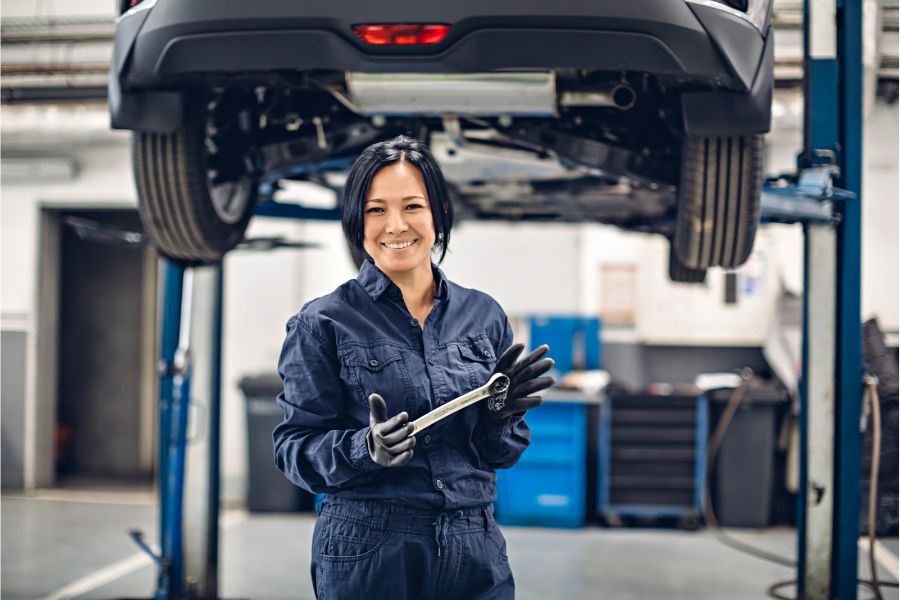
When To Repair Or Replace Your Car’s Suspension
A damaged or deteriorating suspension can not only make your vehicle unmanageable, but also make it dangerous to drive. This is because the suspension system in your car is what allows you to control your car and the direction it moves in. Driving with a damaged suspension significantly increases your risk of having an accident and causing harm to other road users.
What does suspension do in a car?
The suspension in your car keeps all your tyres in firm contact with the surface of the road, and ensures that your steering, driving, and braking systems work effectively. It’s made up of a series of components like springs and shocks that provide you with a safe and smooth journey, no matter which type of road you’re driving on. Your suspension is also there to absorb the shock from any bumps or potholes in the road, allowing you and your passengers to have a comfortable trip.
What causes car suspension problems?
Every time you drive on a rough or uneven road, hit a bump, or go through a pothole, your suspension absorbs the shock. Over time, the components of your suspension can sustain damage from these shocks.
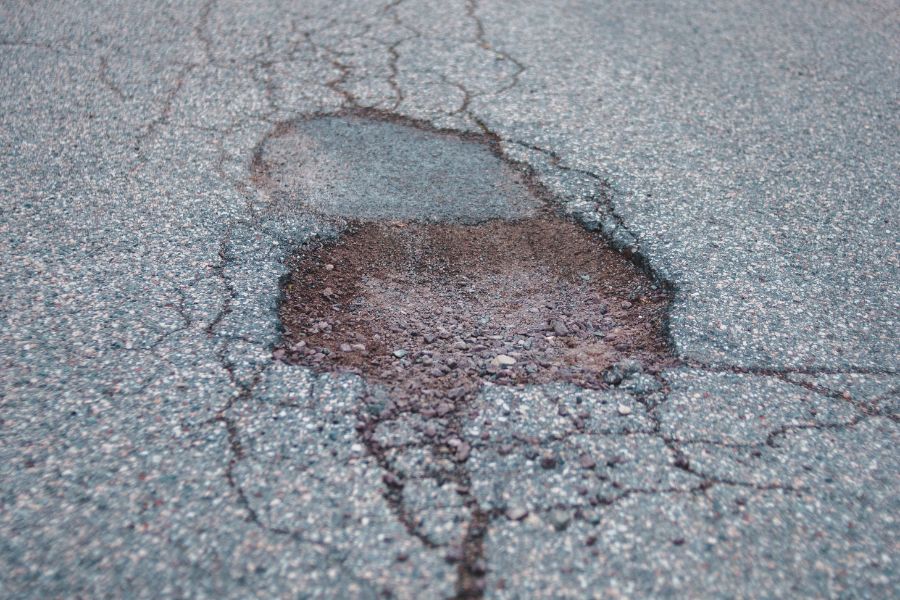
You might be wondering how you know when your suspension needs to be repaired or replaced. Generally speaking, your suspension will need to be replaced every 80,000 to 160,000kms, depending on your driving conditions.
But, if you’re experiencing any of the signs below, then you need to bring in your vehicle in to a TAMMS Repair Centre as soon as possible.
1. Steering your car becomes difficult
Your suspension could be lagging if you are finding your car is pulling to one side and you struggle to get the steering wheel to stay straight during normal driving. The moment you notice this issue, it’s time to bring the vehicle to your mechanic at a TAMMS Repair Centre.
2. You feel every bump in the road and your car squeaks when you go over bumps
If you’re noticing every little bump on the road, whether it’s on a residential street, main road, or freeway, your vehicle is probably bouncing up and down. Are you hearing a squeaking sound when you go over a bump in the road? This might mean the shock absorber is starting to wear. As your suspension wears, it will become increasingly difficult to keep your car under control with each bump you have to go over.

3. Your car is sitting lower on one side
When your car is parked on a flat surface, does it look like it’s sitting lower on one side compared to the other? Or does the whole car look like it’s sitting lower than it should be? This is a sign that the springs in your suspension are wearing or could even be broken. If your car is unbalanced, it can also affect the way your tyres wear. Over time, your tyres could wear unevenly and need to be replaced.
4. Problems when braking
Having a faulty suspension can be dangerous if your shock absorbers are ineffective because your car might nosedive or dip forward when you brake. This can increase your stopping distance and become a major hazard when driving in wet or snowy conditions.
Is car suspension expensive to fix?
The price of the repairs will depend on the amount of damage to your suspension and which parts need to be replaced. At TAMMS Repair Centres, one of our experts will examine your vehicle and provide you with a pricing estimate before we start working on your car.
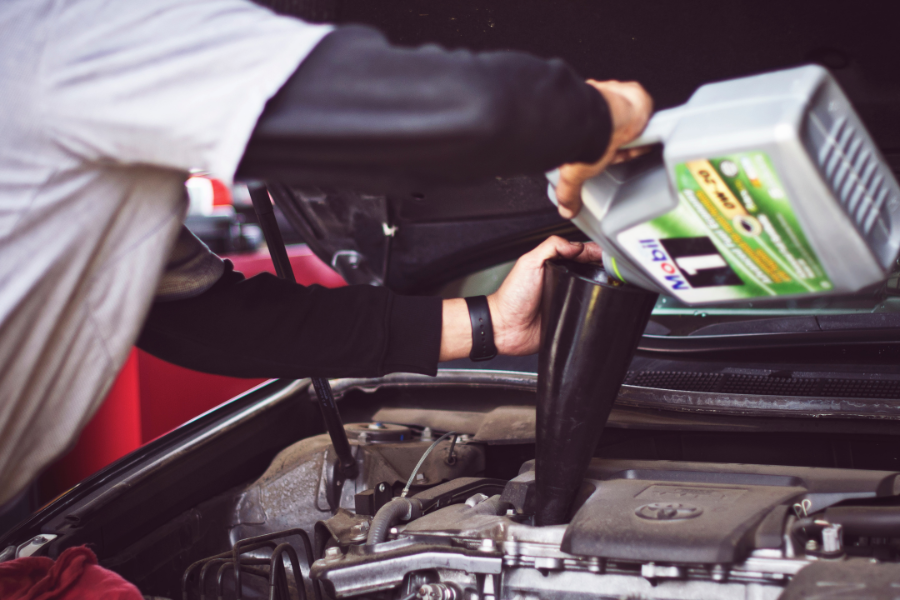
The Benefits Of Using Synthetic Oil
All vehicles, except electric cars, need to have their oil changed at regularly scheduled intervals. Oil keeps the engine’s moving parts lubricated so they can run smoothly. Without lubricant, the moving parts will wear faster, causing expensive problems down the track.
When it comes to changing your engine oil, you might be wondering if you should choose conventional or synthetic oil. While synthetic oil is more expensive to buy, it lasts longer, making it a better investment in the long run.
How long does synthetic oil last in an engine?
Synthetic oil generally lasts around 6 months to one year before it needs to be replaced. A good time to have this done is during your scheduled service. Keep in mind that factors like the age of your car, the brand of synthetic oil you’ve used, the distance you drive, and your driving conditions all impact how long synthetic oil lasts and can mean that the oil might need to be replaced sooner.
What is the difference between synthetic oil and regular oil?
Synthetic oil is made from a base oil, power additives and a carrier oil that enforces an even distribution of the additives. It consists of man-made chemical compounds, while regular oil is much less refined.

What are the benefits of synthetic oil instead of conventional oil?
Synthetic oil is generally considered the best oil for your car because it’s designed for performance. It protects against engine wear by forming a fluid film that prevents the metal components from making contact and rubbing against each other.
Another big advantage of using synthetic oil is that it retains its viscosity regardless of the temperature. In summer when the temperatures soar, it’s designed to offer improved heat resistance. This aspect is also important because your engine heats up when you drive your car.
Synthetic oil also works better in cooler temperatures because it doesn’t contain any waxes, so it doesn’t thicken in the cold like conventional oils do. This means it can reach the vital engine components more quickly to provide immediate engine protection. In this way, synthetic oil also helps to increase your fuel economy because it flows readily as soon as you start your car.
That means filling up less often and saving some money.
Using synthetic oil also helps to keep your engine cleaner. This is because it contains fewer impurities than conventional oil, and as a result, doesn’t have the same level of deposits and sludge forming that conventional oil does.
Synthetic oil outperforms conventional oil on nearly all counts. If you would like to know more about the best option for your vehicle, speak to one of our expert mechanics during your next service.
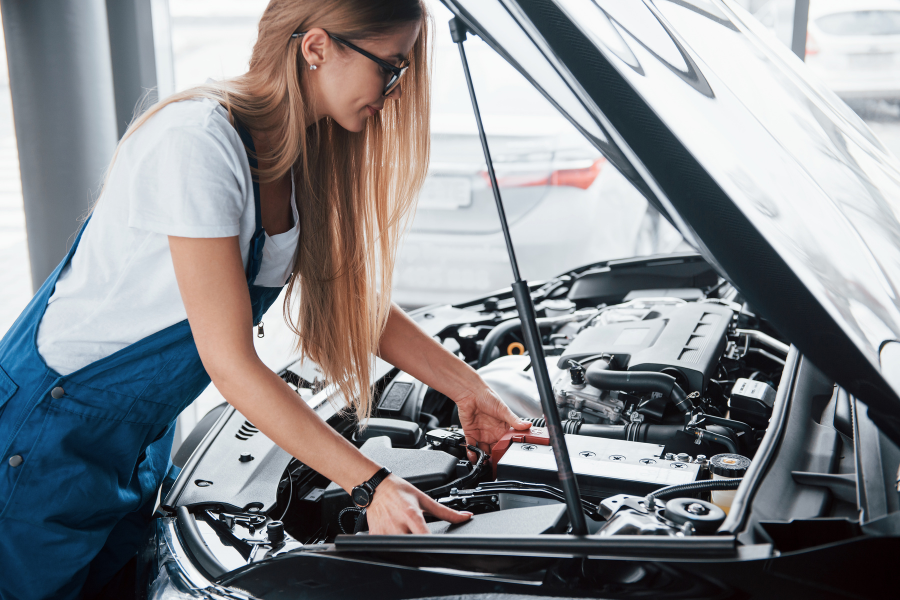
11 Simple Ways To Maintain Your Vehicle
Making sure your car receives regular services is important for several reasons. By maintaining your car, you can ensure it’s safe to drive and less likely to need pricey repairs down the track. You’ll also be saving money by improving your vehicle’s fuel economy and extending its lifespan.
It’s important for you to know what needs to be done and how often for optimal upkeep of your vehicle. We’ve put together a guide to help you keep on top of your car maintenance requirements.
1. Keep it clean!
The simplest thing you can do to maintain your car’s value is to keep it clean – both inside and out.
By keeping the exterior clean, you can protect the paint, and therefore maintain the appearance and value of your vehicle. If you park outside and your car is exposed to tree sap or bird droppings, these should be cleaned off as soon as possible to prevent damage to the top layer of paint. If you wait too long, it could leave stains or even ruin the paint, meaning you’ll have to respray the entire panel. Leaving dirty water for too long can also result in stains you can’t wipe away – not to mention caked on dust that has the potential to scratch the paint finish when you try to clean it off.
Keeping the inside of your car clean is just as important as making sure the outside looks good – so get the vacuum and some non-toxic surface cleaner out. Bacteria can lurk in the carpets and plastics, while dust and pollen can enter through the air vents and settle inside the cabin. Regular interior cleaning will prevent potential allergies and breathing conditions.
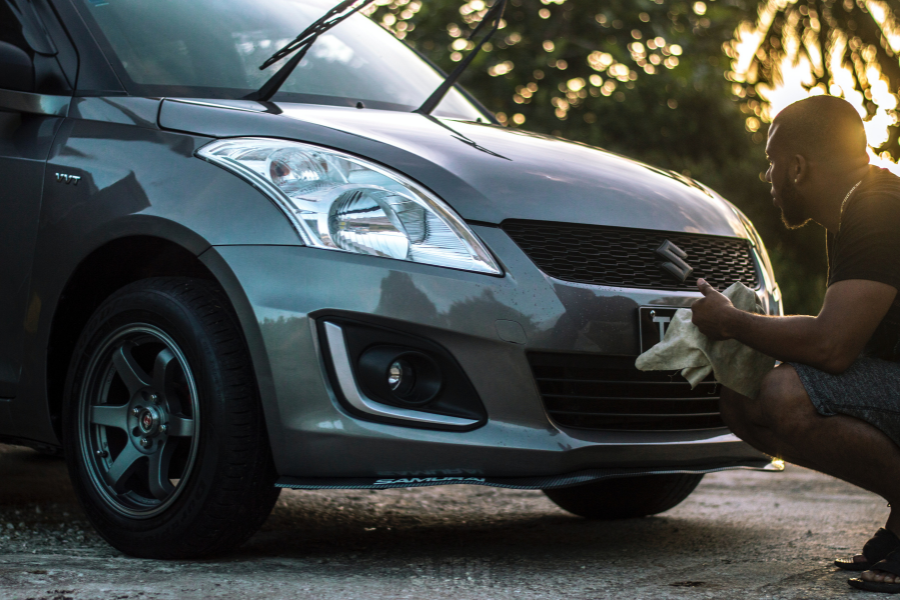
2. Check your oil and coolant levels
To avoid problems with your engine, you need to make sure that your oil and coolant are at the correct level. Although these are things you can check on your own, at TAMMS Repair Centres, our mechanics will monitor and keep a record of these levels during your scheduled service to ensure they are always sitting where they should be.
3. Have a look at your air filter
The air filter is an important component of your engine. It regulates the airflow through your engine and helps to keep debris and particulate matter out. When your air filter is flowing properly, it improves your fuel economy, decreases your emissions, and extends the life of your engine. Your air filter is usually replaced once a year, depending on where most of your driving takes place. If you mainly drive on a dusty or sandy road, you’ll probably need to have your filters replaced more regularly. Because some air filters can be more complex and difficult to clean or replace, we recommend letting one of our experts take care of this for you.
4. Make sure your tyre pressure and tread depth are correct
You should be checking your tyre pressure at a service station at least once a month. If you’re not sure what the correct tyre pressure for your car is, check the sticker on the inside of your car door. The legal minimum for your tyre tread depth is 1.5mm – anything lower than this and your car will be classed as unroadworthy. Instead of fussing with a tyre tread depth indicator or the coin trick, let our team of professionals monitor the tread depth and pressure of your tyres to ensure a safe ride for you and your passengers.
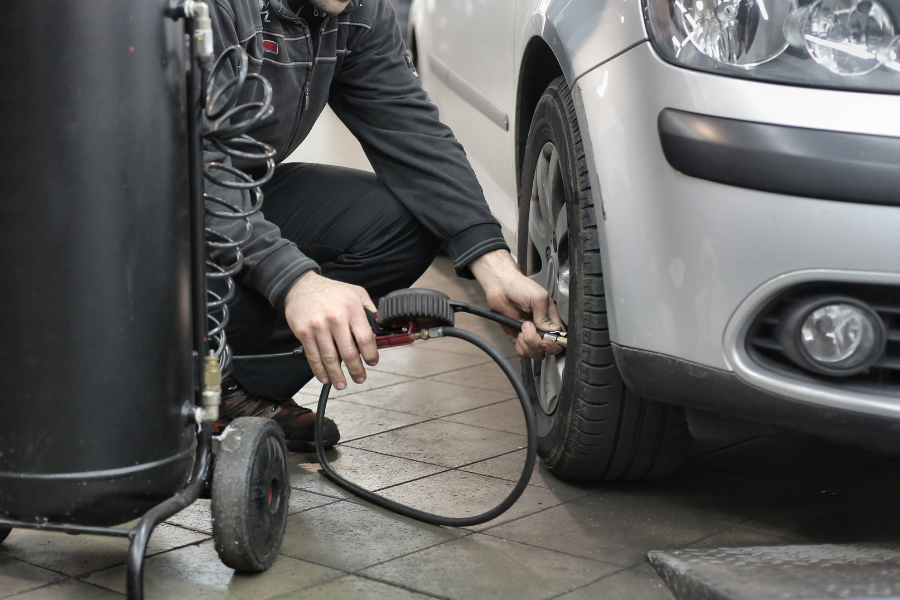
5. Get your tyres rotated and wheels aligned
The tread wear patterns typically vary between your front and rear tyres. It’s important to rotate your tyres to extend their service life by evenly balancing the tread wear. This also helps to prevent noise and vibration issues. Our mechanics can look after this for you to improve the safety and effectiveness of your vehicle.
6. Check your headlights, indicators, brake and parking lights are working
To reduce the likelihood of someone crashing into you because they didn’t see you, you need to make sure your lights are all functioning properly. If they’re not, let one of our experts do the repairs to keep you and other drivers safe.
7. Ensure your transmission fluid is at the right level
Transmission fluid ensures all the moving parts inside your transmission are functioning properly. Depending on whether you drive a manual or an automatic vehicle, the time between changing your transmission fluid will vary. Our mechanics will follow the vehicle manufacturer’s recommendations when it comes to changing your transmission fluid.
8. Get your shocks and struts inspected
The shocks and struts are an integral part of your car’s steering system. They control the impact and rebound of your vehicle when you drive over bumps in the road. These are usually replaced every 50,000 kilometres but are inspected during each scheduled service to ensure they are working correctly.
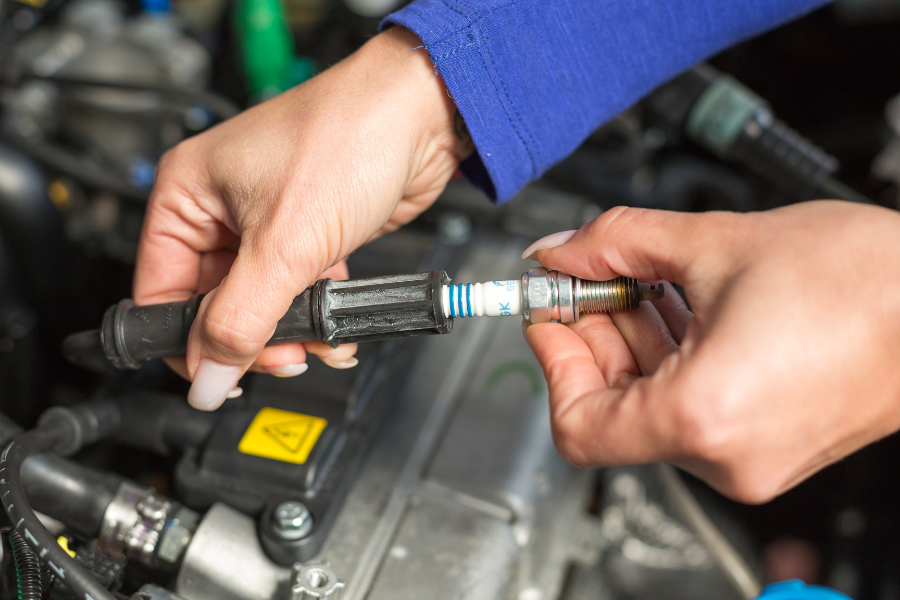
9. Have your spark plugs checked
Without spark plugs, your vehicle wouldn’t start. Spark plugs ignite the gas and air mixture that powers your vehicle. When they aren’t working properly, your engine loses power and won’t run at its optimal capacity. You can often identify a problem with your spark plugs if you have trouble starting your car or your car struggles to accelerate. Bring your car in and our experts can test your spark plugs and replace them if necessary.
10. Replace your windscreen wipers
Your windscreen wipers should be replaced once a year, usually before winter starts as they can harden over the warmer months.
11. Make sure your battery is working correctly
Without your car battery, your vehicle simply won’t run. Our mechanics will perform battery checks during your service and replace your battery when required.
If you’re looking for more information on regular car services, don’t forget to read this.
By following your servicing schedule, you can help extend the life of your vehicle and avoid any unwanted breakdowns or expensive repairs. It also comes in handy when you decide to sell your vehicle. Let TAMMS Repair Centres take care of all your vehicle maintenance. Be sure to give us a call and book your vehicle in with us.


